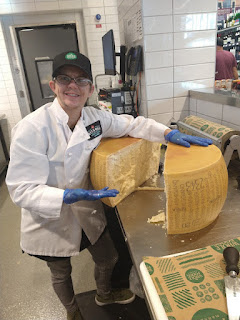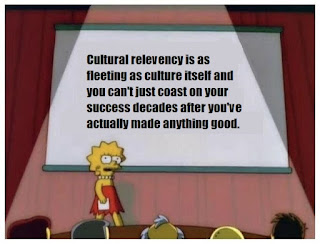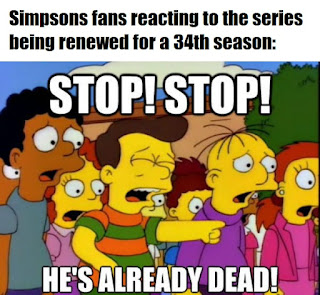This article was originally written for and published by the Grand Geek Gathering on March 30th, 2022.
You’ve probably seen it and you probably hate it.
It’s corporate art style, and it was originally developed for Facebook, but is now in use by just about every other big tech and start-up out there: Google, YouTube, Airtable, Hinge, Uber, Lyft, GrubHub, and Airbnb, to name a few.
What is this art style, and where did it come from? More importantly, why is it so universally hated?
Jump in the world of inoffensive pastels, noodly arms, and flat, 2-dimensional vector drawings as we examine what makes Corporate Art tick!

What is it?
There are many features of Corporate Art. Often described as “minimalist” or “flat,” its major distinguishing features include use of primary shapes, uniform line widths, minimal line work, little texture, and minimal tonal shadows to convey depth.
The humans depicted by Corporate Art have non-representational skin tones, often pastels or cool colors like blue and purple. They also have long, oversized limbs or other exaggerated features, which often have a “wiggly” or “flowing” movement when animated. While the arm and legs have uniform length and width (with only the slightest taper to the stubby fingers), the heads are small compared to the body, and the eyes are dots with lines for eyebrows.
Examples of this art, from an actual Facebook artist’s portfolio, can be found here.

Where did it come from?
It goes by many names, despite having little variation. Corporate Art Style, also called Big Tech Art Style, Flat Art, Globohomo Art Style (short for “globalized homogenization”) and Corporate Memphis, was developed for Facebook in 2017 by a design firm called Buck.
Specifically, the design is heavily credited to artist Xoana Herrera and animator Esteban Esquivo.

An early example of the duo's work
This art style was originally called “Alegria,” Spanish for “joy.”
“Corporate Memphis” was coined in 2018 and refers to the Memphis Group, a widely-loathed postmodern Italian architectural group from the 1980s whose designs typically included flat, geometric, and colorful features.
The characterization of Corporate Art online garnered notice from a Twitter account @HumansOfFlat, which amassed 6,000 followers and collected examples of the art to criticize and ridicule it. The account was suspended in 2019.
But this particular account wasn’t alone in its hatred of the style. On August 21st, 2019, Aiga Eye on Design blog published an article titled "Don’t Worry, These Gangly-armed Cartoons Are Here to Protect You From Big Tech," which remains one of the first Google results when you search for corporate art style analysis, and is also the first citation on Wikipedia when you visit the Corporate Memphis page.
On February 6th, 2021, YouTube channel Solar Sands posted a video decrying the art style as “fake.” It received over 2 million views in its first month and currently sits on 3.8 million views.
Watching the video myself, I was treated to an ad for Google Fi that used– yep, you guessed it– this very same art style. It’s everywhere. I'm pretty sure I even used some stock images in my last article.

Why do tech companies love it so much?
For tech companies, corporate art style is incredibly useful. For one thing, the art is vector-based and easily replicable. This means that instead of needing to pay one artist, you can have a whole team of graphic designers who make uniform, consistent art. This art style renders the graphic designers easily replaceable. What’s more, it can be rapidly created in programs like Abode Illustrator with little effort or time.
The non-representational skin tones are both inoffensive and “inclusive.” And the minimalism, paired with the movements depicted, makes for exciting, “playful” art that does a good job of representing what the companies are trying to communicate about themselves: that they are accessible, fast-paced, and fun.
Unfortunately it’s very quickly become despised by most people.

Why do we hate it so much?
A lot of artists and graphic designers have chimed in to offer opinions on why this art style, which is designed to be inoffensive, seems to have had the opposite effect.
Some suggest it’s the “grotesque” proportions of the people, which trigger an uncanny valley response. Others have said that the art style is “obnoxiously joyful” and that the “constant motion” causes visual fatigue. Still more believe that the issue is that people are aware that the non-representational skin tones are tokenizing and that, in its efforts to be inclusive and diverse, the people end up representing no one at all, leading the audience to feel pandered to.
But all of this, to me, falls into a bigger issue, which is that the art doesn’t feel like authentic art. This art carries no emotion and conveys no message other than to hype a product.
The art is definitionally “corporate” with no underlying message.
But it doesn’t have to be. The truth is, minimalist art is often very good. But the corporate style has so thoroughly saturated the market that we tend to see it, immediately identify and associate it with Big Tech branding, and then dismiss it as "noise" without considering its artistic merits, if any.
The truth is, flat, minimalist drawings with tonal shadows, exaggerated limbs, soft colors, and primary shapes is a legitimate art style. We’ve seen it used with finesse in the Bauhaus and Art Deco schools of art, and indeed, I’ve heard it said that this style is a natural evolution of Art Deco and builds on the kind of art made by A.M. Cassandre (who, it should be noted, famously made his art for advertisements).
An example of A.M. Cassandre's work.
Vintage globohomo?
In fact, one of my favorite paintings of all time is a minimalist vector piece of art, which has several similarities to Corporate Art: minimal line use, exaggerated features, tonal shadows.

"Two Hours Past Bedtime" by Shag
But the thing about this piece of art is that it tells a story, and conveys an emotion. It’s not trying to promote any product other than itself. Like all good art, it’s representational and thought-provoking.
And that’s precisely what corporate art style lacks.
But there's good news!
The extreme dislike of Corporate Art has prompted people to create creative parodies which are, in fact, art. Ironic and satirical, the parody art makes a statement and evokes emotion: humor at the image, annoyance at the style, and appreciation for the commentary.
Two of my personal favorite pieces of Corporate Art parody include a recreation of Francisco Goya's Saturn Devouring His Son, and of Artemisia Gentileschi's Judith Slaying Holofernes. The "pleasing, soothing" minimal and color scheme, paired with the violence of the imagery, makes for an unsettling and comedic piece of true art.


So perhaps not all hope is lost for this flat, minimalist style. We may hate it because we associate it with unskippable YouTube abs, but we can't deny that it's exerting a powerful influence over how we consume and respond to art.

















































